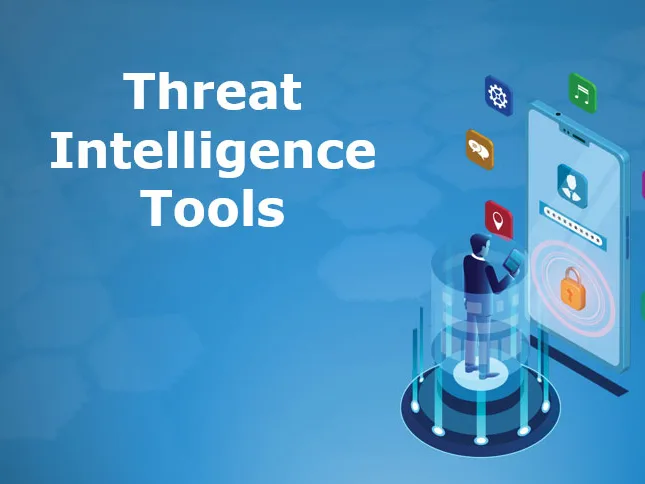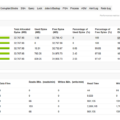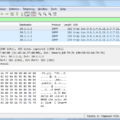In the modern world of cyber security, threat intelligence tools are essential for protecting organizations from malicious attacks. Cyber threat intelligence (CTI) is the collection and analysis of data related to threats from cyber criminals, including malware, exploits, and vulnerabilities. With the rise of sophisticated cyber-attacks, it is more important than ever to have the right CTI tools in place to detect and respond to threats in a timely manner.
CTI tools come in many forms and can be used for a variety of purposes, including threat identification, threat assessment, and incident response. Some common CTI tools include:
1. Network/Host Intrusion Detection Systems (NIDS/HIDS): NIDS/HIDS are software applications that monitor network traffic and system logs for evidence of malicious activity. These systems can be configured to alert security personnel when suspicious activity is detected so that corrective action can be taken quickly.
2. Vulnerability Scanners: Vulnerability scanners are specialized programs that scan networks for known vulnerabilities and generate reports with detailed information about any potential issues discovered during the scan. This information can then be used to patch or mitigate any identified weaknesses before they are exploited by attackers.
3. Security Information & Event Management (SIEM) Systems: SIEM systems integrate multiple sources of security-related data into a single platform so that administrators can quickly identify suspicious activity across their entire network infrastructure. This makes it easier for security teams to investigate incidents by providing them with a comprehensive view of all activities occurring on their networks at any given time.
4. Threat Intelligence Platforms (TIPs): TIPs are platforms designed to aggregate and analyze threat data from multiple sources in order to provide organizations with an up-to-date view of current threats facing their networks. Tips also provide visibility into new threats as they emerge so that organizations can take proactive steps to protect themselves from potential attacks before they happen.
Having the right CTI tools in place is essential for ensuring an organization’s digital safety and preventing attackers from gaining access to sensitive data or disrupting business operations. By utilizing these tools, organizations can gain insight into emerging threats so that they can take action before it’s too late.

Understanding Cyber Threat Intelligence Tools
Cyber threat intelligence tools are an essential part of a comprehensive security strategy. They provide organizations with valuable insights into the latest cyber threats, giving them a better chance of identifying and responding to potential attacks. Cyberthreat intelligence tools work by aggregating data from multiple sources and formats, such as open-source intelligence, online forums, and dark web monitoring. This information is then analyzed to identify malicious activities, emerging threats, vulnerabilities, and other indicators of compromise. By leveraging this data, organizations can gain greater visibility into the current threat landscape and develop effective strategies for mitigating risk. Additionally, these tools can also be used for proactive research and threat-hunting activities to detect potential threats before they become an issue.
Types of Cyber Threat Intelligence
1. Strategic Threat Intelligence: Strategic Threat Intelligence is focused on long-term threats and provides decision-makers with an understanding of the current and future threat landscape. It focuses on identifying trends and patterns, as well as determining the magnitude of the risk posed by the threat. This type of intelligence helps organizations plan for and mitigate potential risks before they become a reality.
2. Tactical Threat Intelligence: Tactical Threat Intelligence is focused on more immediate threats, providing information about current adversaries and their tactics, techniques, and procedures (TTPs). It helps organizations to quickly detect and respond to threats that are already in progress or have already been identified.
3. Technical Threat Intelligence: Technical Threat Intelligence gathers data from technical sources such as malware analysis, packet analysis, domain registration analysis, etc., to gain insight into malicious actors’ methods and tools. This type of intelligence is used to identify malicious actors’ infrastructure, analyze their tactics, techniques, and procedures (TTPs), develop defensive strategies against them, and proactively defend against attacks.
4. Operational Threat Intelligence: Operational Threat Intelligence focuses on gathering data from various sources such as social media platforms or hacker forums in order to gain insight into malicious actors’ activities and intentions. This type of intelligence helps organizations understand how attackers are operating in a given environment so that appropriate countermeasures can be implemented before an attack takes place.
The Best Open Source Tool for Cyber Threat Intelligence
The MISP project (Malware Information Sharing Platform) is widely regarded as the best open-source tool for cyber threat intelligence. MISP provides a platform for organizations from different sectors to share and collaborate on threat intelligence information. It also allows users to aggregate, store and analyze data from multiple sources, and disseminate the resulting insights to relevant stakeholders.
MISP has a range of features that make it an ideal platform for cyber threat intelligence. It supports the exchange of structured data in various formats, such as STIX, OpenIOC, and CSV. It also has powerful analytics capabilities that allow users to detect patterns in large datasets and apply machine learning techniques to automatically identify emerging threats.
In addition, MISP includes a wide variety of tools for monitoring attacks, such as automated alerting services, API integrations with other security systems, and visualization tools. Furthermore, it provides support for numerous open-source feeds related to malicious activity, including IP addresses and URLs associated with malware or phishing campaigns.
Overall, the MISP project is an excellent open-source tool for cyber threat intelligence that can help organizations stay ahead of the latest threats.
Sources of Cyber Threat Intelligence for Information Gathering
1. Open Source Intelligence (OSINT): Open source intelligence is the gathering of publicly available information from sources such as news articles, social media, government websites, and other open sources. This information can be used to identify threats and trends in the cyber security landscape.
2. Social Media Intelligence (SOCMINT): Social media intelligence is the use of data from social media platforms such as Twitter, Facebook, Instagram, and LinkedIn to gain insight into potential threats or emerging trends in the cyber security landscape.
3. Human Intelligence (HUMINT): Human intelligence involves gathering information from people who have knowledge about a certain threat or trend. This can include interviewing experts in the field or attending professional conferences to gain insights into current threats or trends in the cybersecurity space.
4. Technical Intelligence: Technical intelligence involves using technical data such as network traffic logs, malware samples, and system audit logs to identify potential threats or emerging trends in the cyber security landscape.
5. Device Log Files: Device log files are records of events that occur on a device such as a computer or a smartphone. By analyzing these log files, organizations can detect potential malicious activities that may be occurring on their networks and systems.
6. Forensically Acquired Data: Forensically acquired data is information retrieved from digital devices after they have been seized by law enforcement or other organizations for investigation purposes. This type of data can be used to investigate crimes involving cyber security incidents, malware attacks, and other malicious activities on digital devices and networks.
The Benefits of CrowdStrike Threat Intelligence
CrowdStrike Threat Intelligence is a cloud-native, AI-powered solution that helps organizations detect and respond to cyber threats. It combines real-time global threat intelligence with advanced analytics to identify malicious activity across your environment, exposing the full scope of an attack. With access to threat intelligence from our Falcon OverWatch team of security experts, CrowdStrike can provide actionable insight into the latest attack trends, tactics, and techniques used by adversaries around the world. Additionally, CrowdStrike Threat Intelligence includes automated threat investigation and response capabilities, allowing customers to quickly investigate incidents and accelerate alert triage and response.
Platforms Utilizing AI in Cybersecurity
AI-driven cybersecurity platforms can be found in many areas of cybersecurity. These include network security, endpoint security, threat intelligence, data loss prevention, and more. Network security platforms use AI to detect malicious activity and block threats before they can cause damage. Endpoint security platforms use AI to monitor devices for suspicious behavior and protect them against malware and other malicious attacks. Threat intelligence platforms use AI to analyze vast volumes of data and identify trends that might indicate possible malicious activity. Data loss prevention (DLP) systems also use AI to scan data stored on networks and in the cloud for unauthorized access or unauthorized transmission of sensitive information. Finally, many companies are now using AI-driven automation tools to streamline processes such as patching, compliance checks, log management, and user authentication. All these platforms are leveraging the power of AI to improve the security landscape for organizations all over the world.
Conclusion
In conclusion, cyber threat intelligence tools are an invaluable resource for security teams. By collecting, aggregating, and organizing threat intel data from multiple sources, they provide a comprehensive overview of the risk landscape, allowing teams to identify, investigate and respond to threats quickly and accurately. The MISP project provides an open-source platform for sharing and collaborating on threat intelligence information, while other sources such as open-source intelligence, social media intelligence, human intelligence, and technical intelligence can all provide important insight into the cyber threat landscape. Ultimately, by leveraging these tools, organizations can protect themselves from malicious actors and ensure their networks remain secure.








